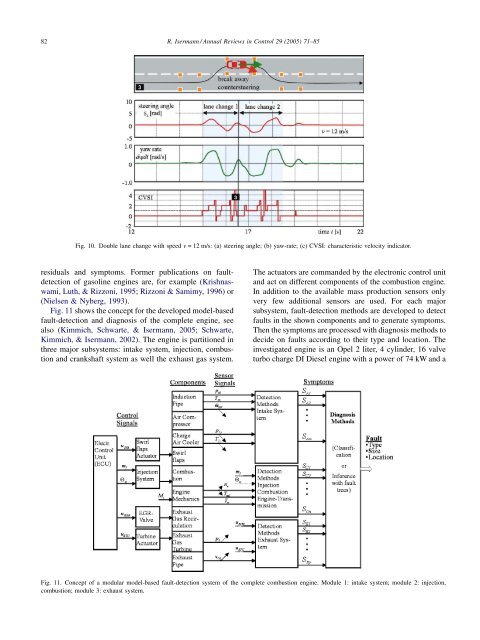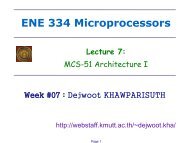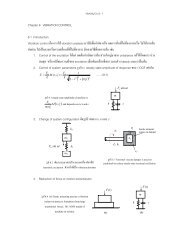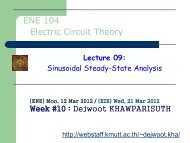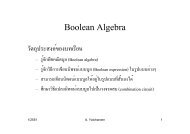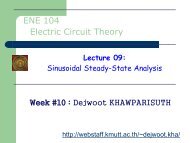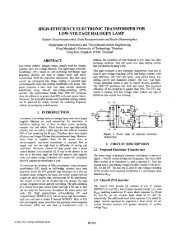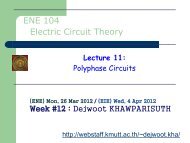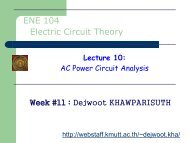Model-based fault-detection and diagnosis ... - web page for staff
Model-based fault-detection and diagnosis ... - web page for staff
Model-based fault-detection and diagnosis ... - web page for staff
Create successful ePaper yourself
Turn your PDF publications into a flip-book with our unique Google optimized e-Paper software.
82<br />
residuals <strong>and</strong> symptoms. Former publications on <strong>fault</strong><strong>detection</strong><br />
of gasoline engines are, <strong>for</strong> example (Krishnaswami,<br />
Luth, & Rizzoni, 1995; Rizzoni & Samimy, 1996) or<br />
(Nielsen & Nyberg, 1993).<br />
Fig. 11 shows the concept <strong>for</strong> the developed model-<strong>based</strong><br />
<strong>fault</strong>-<strong>detection</strong> <strong>and</strong> <strong>diagnosis</strong> of the complete engine, see<br />
also (Kimmich, Schwarte, & Isermann, 2005; Schwarte,<br />
Kimmich, & Isermann, 2002). The engine is partitioned in<br />
three major subsystems: intake system, injection, combustion<br />
<strong>and</strong> crankshaft system as well the exhaust gas system.<br />
R. Isermann / Annual Reviews in Control 29 (2005) 71–85<br />
Fig. 10. Double lane change with speed v = 12 m/s: (a) steering angle; (b) yaw-rate; (c) CVSI: characteristic velocity indicator.<br />
The actuators are comm<strong>and</strong>ed by the electronic control unit<br />
<strong>and</strong> act on different components of the combustion engine.<br />
In addition to the available mass production sensors only<br />
very few additional sensors are used. For each major<br />
subsystem, <strong>fault</strong>-<strong>detection</strong> methods are developed to detect<br />
<strong>fault</strong>s in the shown components <strong>and</strong> to generate symptoms.<br />
Then the symptoms are processed with <strong>diagnosis</strong> methods to<br />
decide on <strong>fault</strong>s according to their type <strong>and</strong> location. The<br />
investigated engine is an Opel 2 liter, 4 cylinder, 16 valve<br />
turbo charge DI Diesel engine with a power of 74 kW <strong>and</strong> a<br />
Fig. 11. Concept of a modular model-<strong>based</strong> <strong>fault</strong>-<strong>detection</strong> system of the complete combustion engine. Module 1: intake system; module 2: injection,<br />
combustion; module 3: exhaust system.


